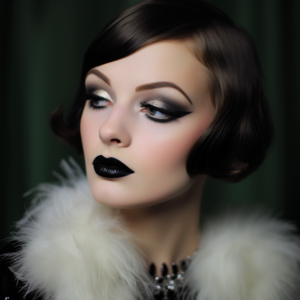The 19th century, often synonymous with the Victorian era, was an epoch marked by societal transformations, industrial progress, and a refined sense of elegance. In the realm of beauty, Victorian women adhered to distinct makeup trends that reflected the prevailing values of modesty, sophistication, and an evolving definition of femininity. This exploration delves into the makeup trends that characterized Victorian elegance during this pivotal century.
Introduction
The Victorian era, spanning from 1837 to 1901 during the reign of Queen Victoria, witnessed a departure from the flamboyance of the preceding Regency era. Victorian society placed a premium on virtue, piety, and modesty, and these values were echoed in the era’s beauty standards. Makeup, once associated with impropriety, underwent a transformation, evolving into a subtle enhancement of natural beauty.
Complexion: The Ideal of Purity
The Victorian ideal of beauty centered around a fair and delicate complexion, symbolizing purity and refinement. Women of the time aspired to achieve a flawless, alabaster complexion, often using lead-based cosmetics like Venetian ceruse to whiten their faces. This practice, however, was not without risks, as the toxic nature of lead could lead to health complications.
To add a touch of color, women lightly applied rouge or lip tint to their cheeks and lips. The goal was not to create a bold, striking look but rather to achieve a subtle flush that hinted at health and vitality.
Eyes: Subtle Enhancement
Eye makeup in the Victorian era was characterized by a restrained elegance. Women lightly defined their eyebrows with pencil or powder, aiming for a natural arch. The emphasis was on softness and femininity rather than dramatic, bold features.
Eyelashes were darkened with a small brush and mascara, often made from a combination of coal dust and petroleum jelly. The intention was to enhance the eyes subtly, creating a doe-eyed effect rather than a pronounced, heavily lined look.
Lips: Rosy Tints and Delicate Hues
The Victorian preference for modesty extended to lip colors. Tints and balms in rosy hues were favored, providing a delicate flush to the lips. The application was purposefully discreet, with an emphasis on creating a youthful and natural appearance.
Lip rouge, when used, was often made from natural ingredients such as crushed flowers, and the color choices leaned towards soft pinks and reds. The overall effect was a demure enhancement of the lips rather than a bold statement.
Hair: Ornate Styles and Accessories
Victorian women paid meticulous attention to their hairstyles, often adorning their tresses with intricate accessories such as combs, ribbons, and small flowers. Hairstyles ranged from elaborate updos to cascading curls, each chosen to complement the individual’s facial features and the occasion.
The intricate styling of hair was an essential component of a woman’s overall appearance, contributing to the image of refined elegance that defined Victorian femininity.
Fashion and Social Expectations
The Victorian woman’s approach to makeup was deeply entwined with societal expectations and the prevailing fashion trends. Modesty in appearance was aligned with broader ideals of moral virtue, and women were encouraged to present an image of purity and grace.
The advent of women’s magazines and beauty manuals during this era disseminated beauty ideals and advice, guiding women on the art of refinement and the subtleties of makeup application. The discourse around beauty became a part of broader discussions on morality and the role of women in society.
Legacy and Contemporary Influence
The Victorian era’s emphasis on subtle, refined beauty continues to influence modern aesthetics. Elements of Victorian elegance, such as soft and natural makeup looks, are often revisited in contemporary beauty trends. The romanticized notion of delicate femininity, as epitomized by Victorian beauty standards, persists in various forms in the modern perception of elegance and grace.
Conclusion
The makeup trends of the Victorian era reflect a delicate dance between societal values, fashion, and personal expression. In an era defined by evolving ideals of femininity and morality, Victorian women navigated the nuanced landscape of beauty with a commitment to subtlety and refinement. The legacy of Victorian elegance endures as a timeless influence on the ever-evolving canvas of beauty standards.


